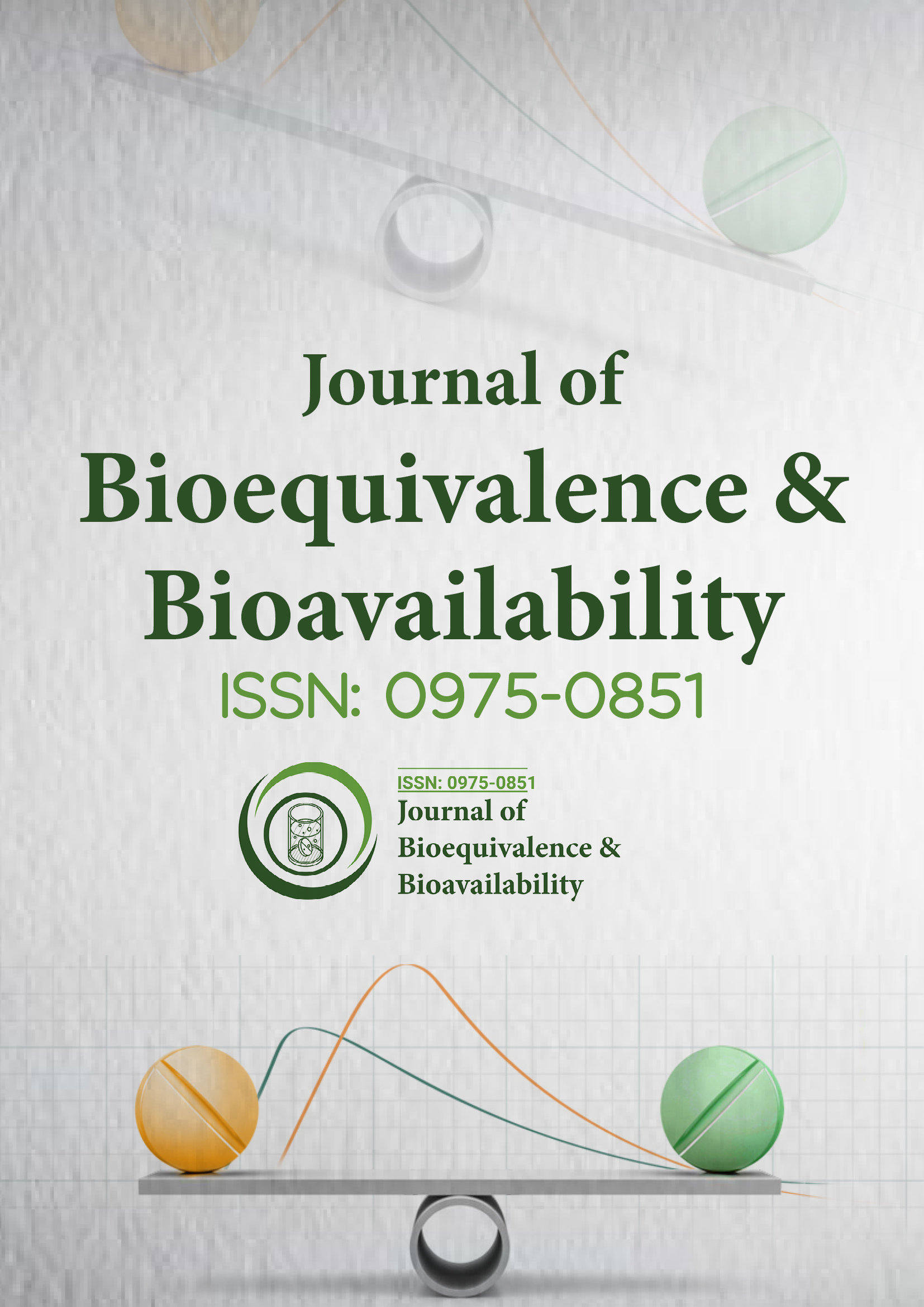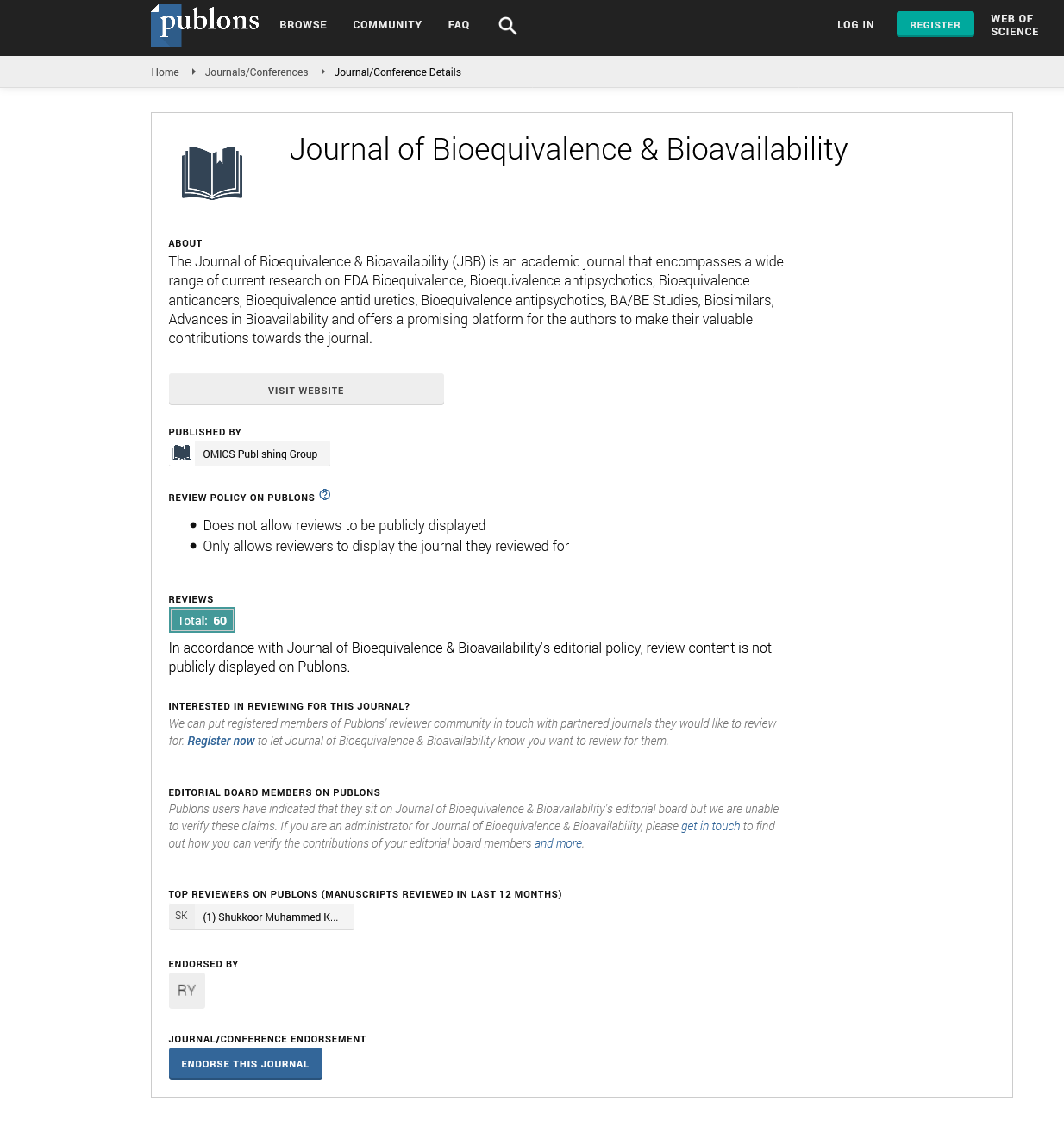Indexed In
- Academic Journals Database
- Open J Gate
- Genamics JournalSeek
- Academic Keys
- JournalTOCs
- China National Knowledge Infrastructure (CNKI)
- CiteFactor
- Scimago
- Ulrich's Periodicals Directory
- Electronic Journals Library
- RefSeek
- Hamdard University
- EBSCO A-Z
- OCLC- WorldCat
- SWB online catalog
- Virtual Library of Biology (vifabio)
- Publons
- MIAR
- University Grants Commission
- Geneva Foundation for Medical Education and Research
- Euro Pub
- Google Scholar
Useful Links
Share This Page
Journal Flyer

Open Access Journals
- Agri and Aquaculture
- Biochemistry
- Bioinformatics & Systems Biology
- Business & Management
- Chemistry
- Clinical Sciences
- Engineering
- Food & Nutrition
- General Science
- Genetics & Molecular Biology
- Immunology & Microbiology
- Medical Sciences
- Neuroscience & Psychology
- Nursing & Health Care
- Pharmaceutical Sciences
Effect of exosomes on cART HIV-1 infected latent model
9th World Congress on Bioavailability and Bioequivalence
April 16-18, 2018 Dubai, UAE
Fatah Kashanchi Catherine DeMarino, Robert Barclay, Michelle Pleet M, Gavin Sampey, Sergey Iordanskiy, Benjamin Lepene, Nazira El-Hage
George Mason University, USA
Ceres Nanosciences Inc., USA
FIU Herbert Wertheim College of Medicine, USA
Keynote: J Bioequiv Availab
Abstract:
HIV-1 infection results in a chronic illness since long-term HAART can lower viral titers to an undetectable level. However, discontinuation of therapy rapidly increases virus burden. Moreover, patients under HAART frequently develop various metabolic disorders, neurocognitive abnormalities and cardiovascular diseases. To purify vesicles, we routinely use a combination or ultracentrifugation and nanoparticle capture to concentrate our EVs from various bodily fluids for downstream assays including proteomics, ELISA, PCR, enzymatic extracellular vesicles and functional assays. We have previously shown that exosomes containing trans-activating response (TAR) element RNA enhance susceptibility of undifferentiated naive cells to HIV-1 infection. Up to a million copies of TAR RNA per microliter were also detected in the serum from HIV-1 infected humanized mice suggesting that TAR RNA may be stable in vivo. We recently have found another viral non-coding RNA that we termed TAR-gag which does not code for a protein, but present in the exosomes. Incubation of exosomes from HIV-1 infected cells with primary cells resulted in a dramatic increase of pro-inflammatory cytokines, IL-6 and TNF-β, indicating that exosomes containing TAR RNA could play a direct role in control of cytokine gene expression. Furthermore, the single stranded 5�?? or 3�?? processed stem RNA binding to TLRs activates the NF-кB pathway and regulates cytokine expression. In our most recent data, we found that the exosomes from infected cells are increased in numbers when cells are treated with specific anti-viral drugs or innate immune molecules such as IFN-α. Finally, we find that the exosomes from uninfected cells allow increased gene expression, which may explain why the latent cells show transcriptional leakiness. Our results directly indicate that HIV viral release and exosome release have overlapping biogenesis pathways including the ESCRT pathway. Similar results are also seen from other neuro-tropic RNA viral infections including HTLV-1, Ebola, RVFV and Zika infection which will be discussed. Therefore, targeting these particles may be a method to lower overall viral burden in infected immunocompromised hosts.
Biography :
Fatah Kashanchi is the Director of Research at the George Mason University Biodefense Program in the Washington D.C. He has published 196 peer-reviewed manuscripts and served As an editorial Board and Reviewer Member for Retrovirology, JBC, J. Virol, Virology, NAR, 4 PLoS Journals, Cell, Molecular Cell, Nature, Medicine and Science Translational Medicine.
Email:fkashanc@gmu.edu

